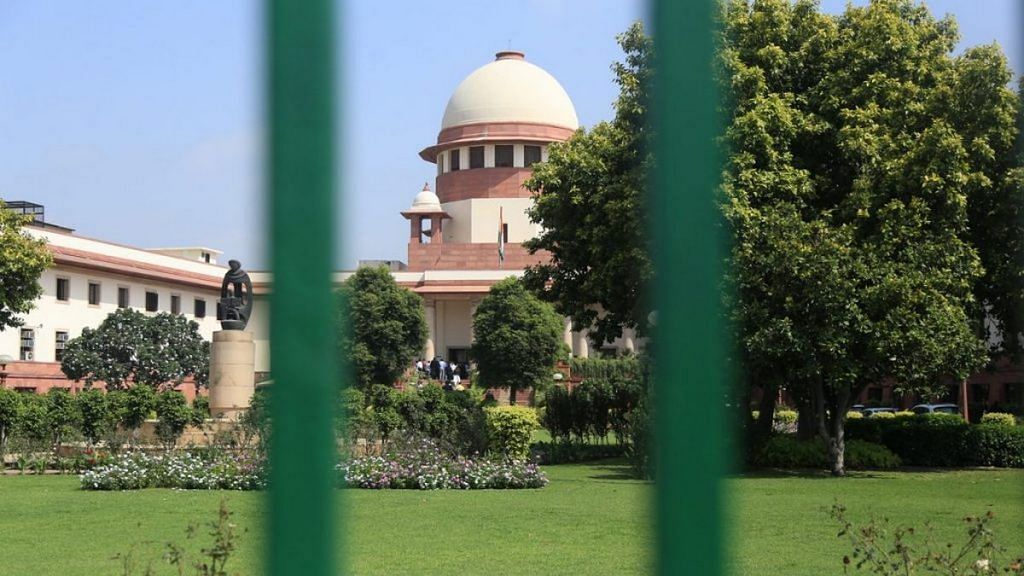New Delhi: The central government submitted before the Supreme Court Wednesday that if it desired to undertake the exercise to regulate the media then it should first do so for digital media, and not electronic media, because social platforms have a faster and wider reach.
The government placed this submission before the top court in an affidavit, filed a day after the latter restrained Sudarshan News from telecasting its ‘Bindas Bol’ show hosted by the channel’s editor-in-chief, Suresh Chavhanke.
The affidavit came in response to petitions filed in the court against the Sudarshan News programme.
The Hindi channel’s controversial programme had sought to “expose” a “conspiracy to infiltrate Muslims” into the Indian civil services, terming the alleged conspiracy “bureaucracy jihad” and “UPSC jihad”. Four episodes of the show have already been aired after the channel got the government nod on 9 September. According to the channel’s submission before the top court, 10 more episodes are left to be telecast.
Signed by an under secretary in the Ministry of Information and Broadcast, the affidavit in Supreme Court said there already exists sufficient framework and judicial pronouncements with regard to electronic media and print media. However, there is none with regard to digital media.
The Centre also asked the court to not lay down general guidelines “with or without” the assistance of an amicus or a committee of persons as amicus, in case it decides to undertake the exercise.
A three-judge bench led by Justice D.Y. Chandrachud had opined Tuesday that the ‘Bindas Bol’ show was “vilification of the Muslims”, which, it said, the top court of the country could not tolerate.
The order came on a petition filed by advocate Firoz Iqbal Khan, who submitted transcripts of the show to prove the episodes left to be aired would be derogatory to Muslims entering the civil services.
The bench is likely to consider the Centre’s arguments Thursday.
The lengthy arguments Tuesday also included discussions on the nature of national debates on television channels, which the bench felt required regulation. It had particularly commented on parallel investigation being carried out in criminal investigations.
The court had orally observed it would set up a committee of five citizens who can come up with standards for electronic media.
“We don’t want any persons of politically divisive nature and we need members who are of commendable stature,” the Justice Chandrachud-led bench had said, after issuing the pre-broadcast censor order.
Solicitor General Tushar Mehta had batted for freedom of the press. However, he touched upon the penetration of digital media and contended this medium should also be treated as part of mainstream media.
Also read: Jamia centre at heart of Sudarshan News ‘UPSC jihad’ row has coached 500+ govt officers
What the I&B ministry affidavit said
In its affidavit, the Centre stated: “It is submitted that while in a mainstream media [whether electronic or print], the publication / telecast is a one-time act, the digital media has faster reach from wider range of viewership / readership and has the potential to become viral because of several electronic applications like whatsapp, tweeter, facebook. Considering the serious impact and the potential, it is desirable that if this Hon’ble Court decides to undertake the exercise, it should first be undertaken with regard to digital media as there already exists sufficient framework and judicial pronouncements with regard to electronic media and print media.”
Terming the digital media as “parallel media”, the Centre claimed that digital web-based news portals and YouTube channels as well as “Over The Top” (OTT) platforms should be included in the mainstream media, along with the print and electronic.
“If the top court considers it appropriate to undertake to exercise of laying down standards to help regulate the media, then there is no justification to confine this exercise only to mainstream electronic media,” stated the affidavit.
Asking the court to not lay down general guidelines “with or without” the assistance of an amicus or a committee of persons as amicus, the Centre also said the subject matter before the court, which involves balancing between journalistic freedom and responsible journalism is a field already occupied either by the statutory provisions laid down by Parliament or by judgments of the top court.
Therefore, said the Centre, a broad precedent already exists for responsible journalism and decision has to be rendered on a case-by-case basis. It even opposed the exercise the court intends to undertake on regulating electronic media, saying such a general exercise is unwarranted and impermissible “merely based upon one episode or few episodes of one channel namely Sudarshan TV”.
Also read: Sudarshan News ‘bureaucracy jihad’ report is hate speech, say civil servants, demand action
